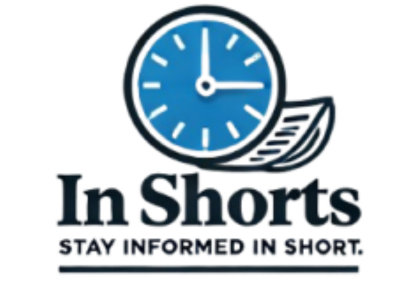In the world of finance, transparency and traceability are increasingly important, especially in sectors where large sums of money change hands, or where compliance with regulations is critical. Traceloans represent a specialized type of loan designed to address these needs by allowing borrowers to trace the origin and history of the funds they are borrowing. This unique feature makes Traceloans a useful tool in various situations where the source of the funds may be unclear or where financial regulations demand a higher level of scrutiny.
In this article, we’ll explore what Traceloans are, how they work, and the key scenarios where they are commonly used.
What Are Traceloans?
A Traceloan is a type of loan where the borrower is able to trace the origin, history, and movement of the funds being borrowed. This is accomplished through advanced tracking mechanisms that ensure full visibility over the loan amount from the point of its origination to its final destination. The ability to trace the funds is especially useful for confirming that the money being borrowed comes from legitimate, transparent sources, ensuring that all parties involved comply with applicable financial regulations.
Unlike traditional loans, where the origins of the funds may not be scrutinized, Traceloans offer a level of financial transparency that can help reassure lenders, regulators, and borrowers themselves. This makes Traceloans a powerful tool in various industries where regulatory compliance, anti-money laundering (AML), and counter-terrorism financing (CTF) requirements are paramount.
How Do Traceloans Work?
The primary feature of Traceloans is the traceability of the funds. This process typically involves the integration of technology such as blockchain, advanced financial software, or other tracking mechanisms to monitor the flow of money. Through this technology, lenders and borrowers can track the entire history of the loan, starting from its source to the final recipient.
Here’s a simplified breakdown of how Traceloans operate:
- Loan Origination: A borrower applies for a loan, and the lender performs due diligence to confirm the borrower’s financial background and the source of the loan request. This may involve analyzing the borrower’s financial situation, assets, and legal status.
- Traceability Setup: Once the loan is approved, the tracking mechanism is activated. This could be a blockchain ledger or another form of digital record-keeping that allows the lender to monitor the path the money takes once disbursed.
- Monitoring and Compliance: As the loan is disbursed, the tracking system allows both the lender and borrower to view the movement of funds, ensuring the money is being used appropriately and for the purpose intended. This helps prevent money laundering or the diversion of funds for illegal purposes.
- Loan Repayment: The borrower repays the loan, and the funds are tracked back to the lender, completing the cycle. Any irregularities or issues that arise during the loan process can be easily identified using the traceability system.
- Final Audit: At the end of the loan’s lifecycle, both the lender and relevant authorities can audit the loan’s history to confirm compliance with applicable laws and regulations.
This level of transparency helps mitigate financial risk and ensures that funds are used ethically and legally.
Why Are Traceloans Important?
Traceloans serve several key purposes, making them an essential tool in today’s complex financial landscape:
1. Regulatory Compliance
One of the primary benefits of Traceloans is their ability to ensure compliance with various financial regulations. For instance, businesses or individuals involved in cross-border transactions or complex financial arrangements may be subject to stricter rules around anti-money laundering (AML) and counter-terrorism financing (CTF). By ensuring that the funds can be traced, Traceloans help satisfy these regulatory requirements and reduce the likelihood of illegal financial activity.
2. Transparency and Trust
For businesses, particularly those dealing with large sums of money or sensitive industries such as real estate, art, or investments, transparency is crucial. Traceloans offer an added layer of trust by allowing all parties involved to know exactly where the money is coming from and where it is going. This creates a more secure environment for both lenders and borrowers, which can be essential in high-stakes transactions.
3. Risk Mitigation
By providing detailed information about the origin of the funds, Traceloans help mitigate the risks associated with fraudulent or untraceable financial activity. This can be particularly important for investors or financial institutions concerned about the integrity of the transaction. By tracking the funds, the chances of money being diverted for illicit purposes are greatly reduced.
4. Cross-Border Transactions
Traceloans are especially useful in scenarios involving international transactions where the movement of funds between countries may be complex. These transactions often involve different currencies, financial institutions, and legal frameworks, which can make tracing funds difficult. With Traceloans, however, the origin and flow of money are documented, ensuring that international transactions comply with both domestic and international regulations.
5. Sensitive Industries
Certain industries—such as real estate, art, and luxury goods—are more susceptible to money laundering and fraudulent activities due to the high value and low traceability of assets. Traceloans provide an essential tool for these industries, enabling them to track and verify the sources of funds being used for large purchases or investments. This helps reduce the potential for financial crime and ensures that investments are legitimate.
Common Use Cases for Traceloans
Traceloans are employed in several scenarios where the need for transparency, compliance, and traceability is critical. Here are some common use cases:
1. Real Estate Transactions
In real estate, large sums of money change hands, and the source of those funds needs to be thoroughly verified to avoid money laundering and illegal activity. Traceloans can be used to trace the origin of funds used for purchasing properties, ensuring that the transaction complies with all regulatory standards.
2. International Transactions
When funds are being transferred internationally, especially in complex financial arrangements, it is vital to trace the source of the funds. Traceloans enable financial institutions and regulators to track money flows across borders, ensuring compliance with international financial laws.
3. Art Investments
The art world is known for high-value transactions and the potential for illicit activity. Traceloans help track the funds used in art purchases, ensuring that the investment is legitimate and the transaction is traceable for future audits or resale.
4. Corporate Loans and Investments
Businesses seeking loans for growth or expansion can use Traceloans to ensure that the funding process is transparent. Traceloans provide a clear audit trail that can be crucial for investors, stakeholders, and regulatory bodies monitoring the company’s financial activities.
Conclusion: The Future of Transparent Financing
In a world where financial transparency is more important than ever, Traceloans provide an innovative solution for ensuring that borrowed funds are traceable and compliant with regulations. Whether used in international transactions, real estate, art investments, or corporate financing, Traceloans help reduce financial risk, improve trust, and ensure regulatory compliance.
As financial transactions become increasingly complex and global, the importance of tools like Traceloans will only grow, providing a more secure, transparent, and compliant way for businesses and individuals to manage their finances. For borrowers and lenders alike, embracing Traceloans can be a significant step toward a safer, more accountable financial future.

